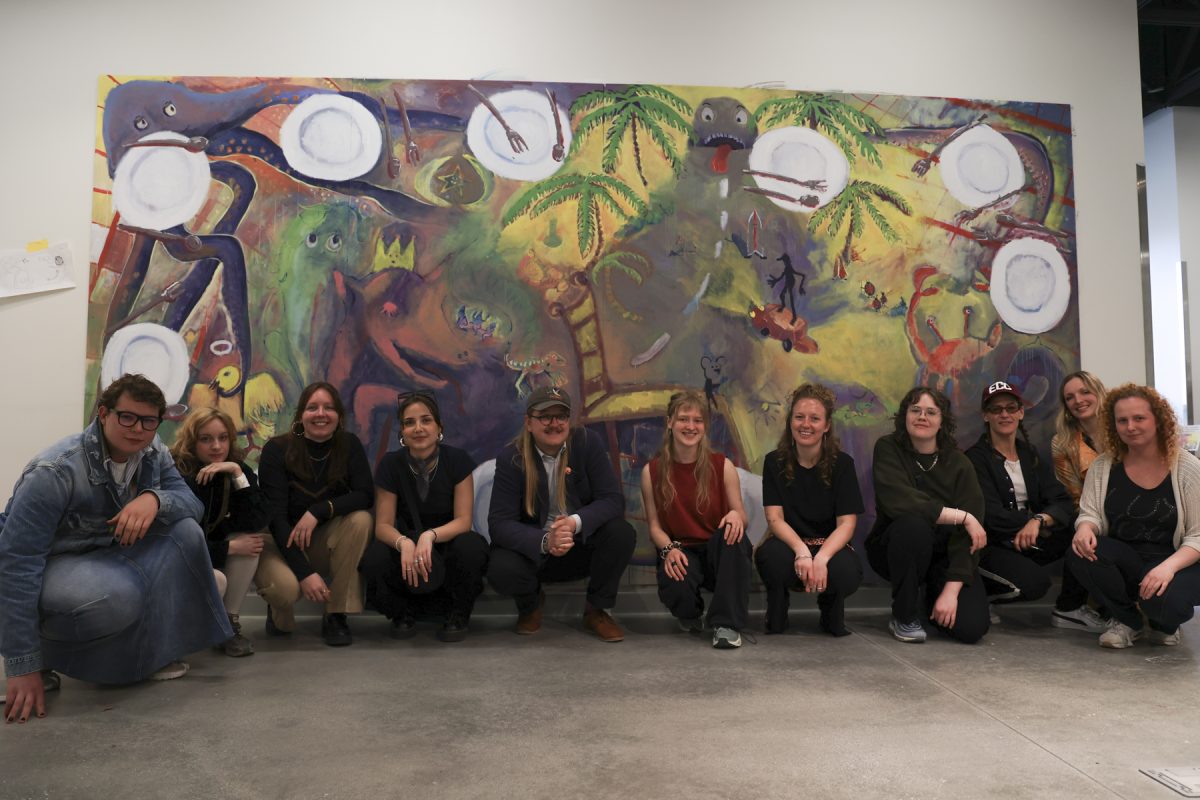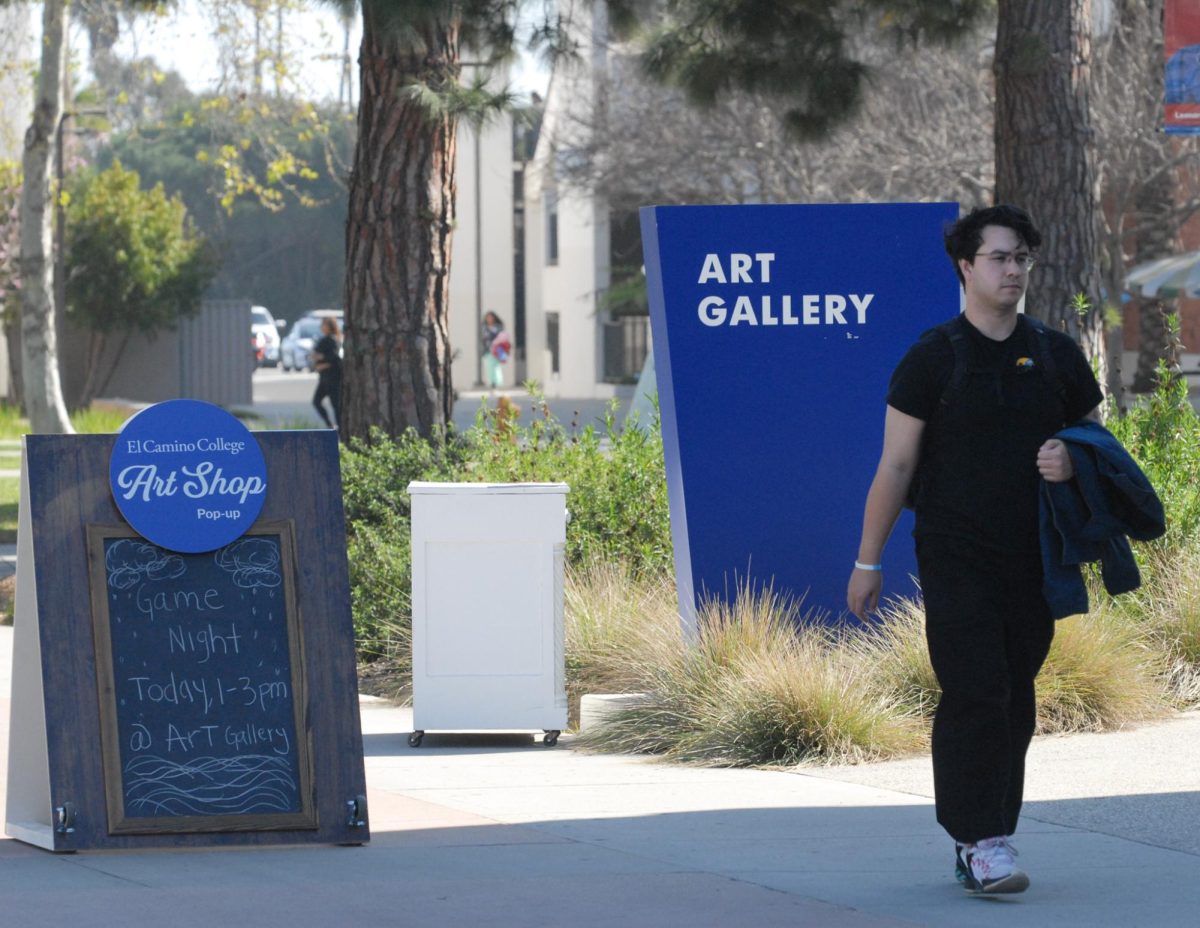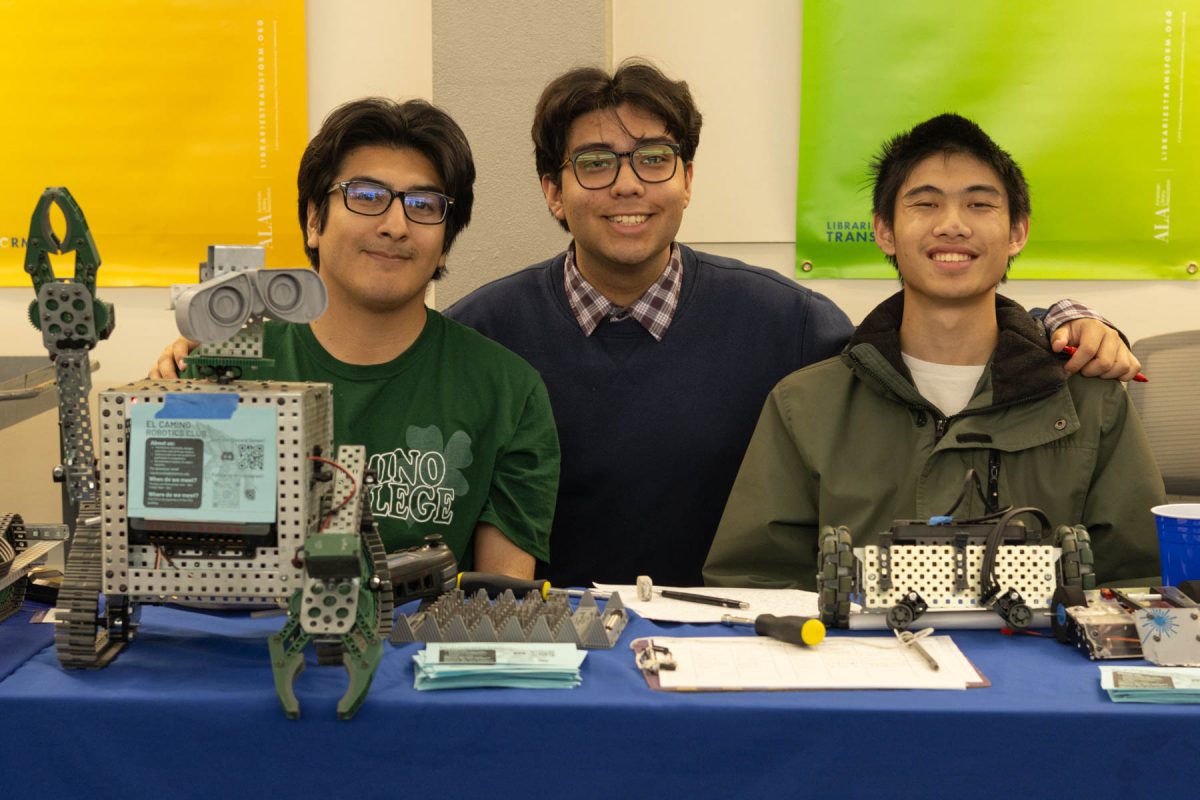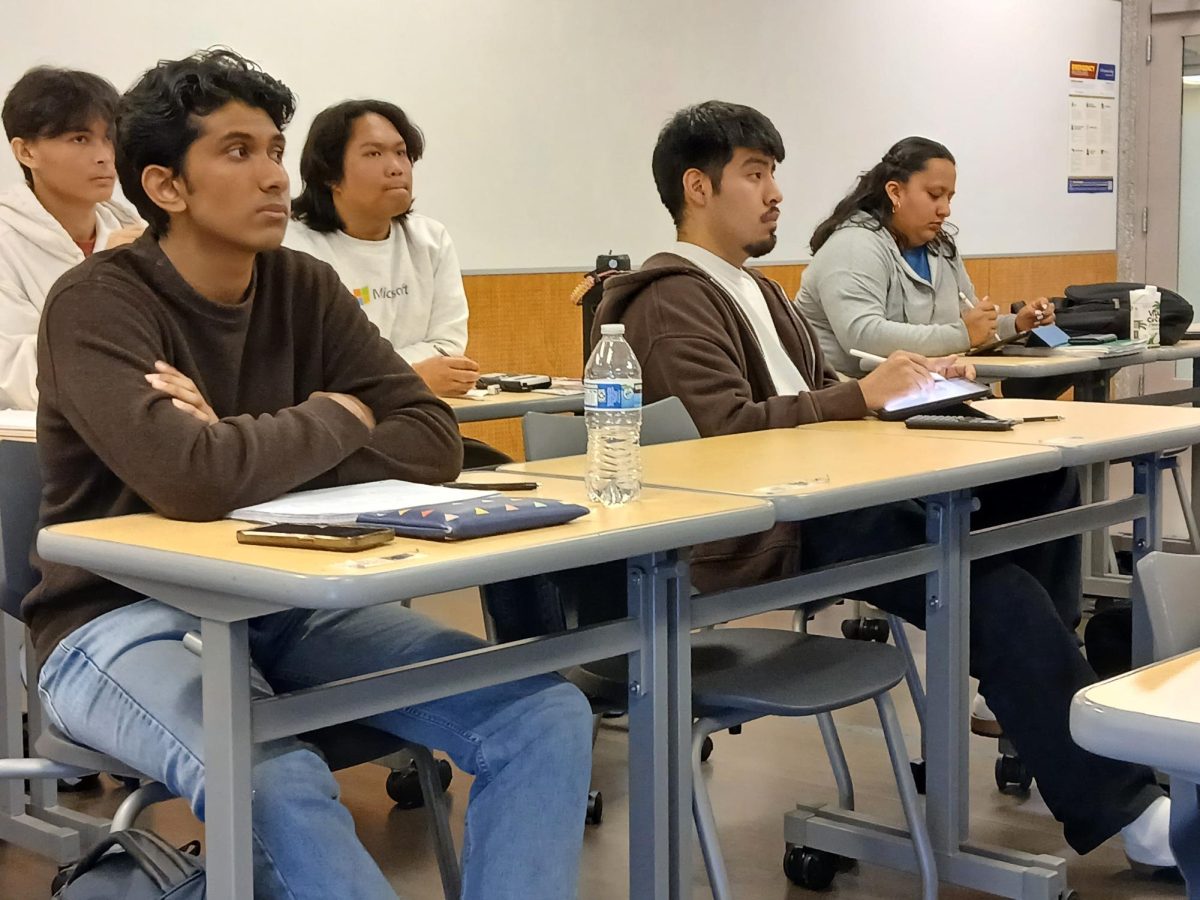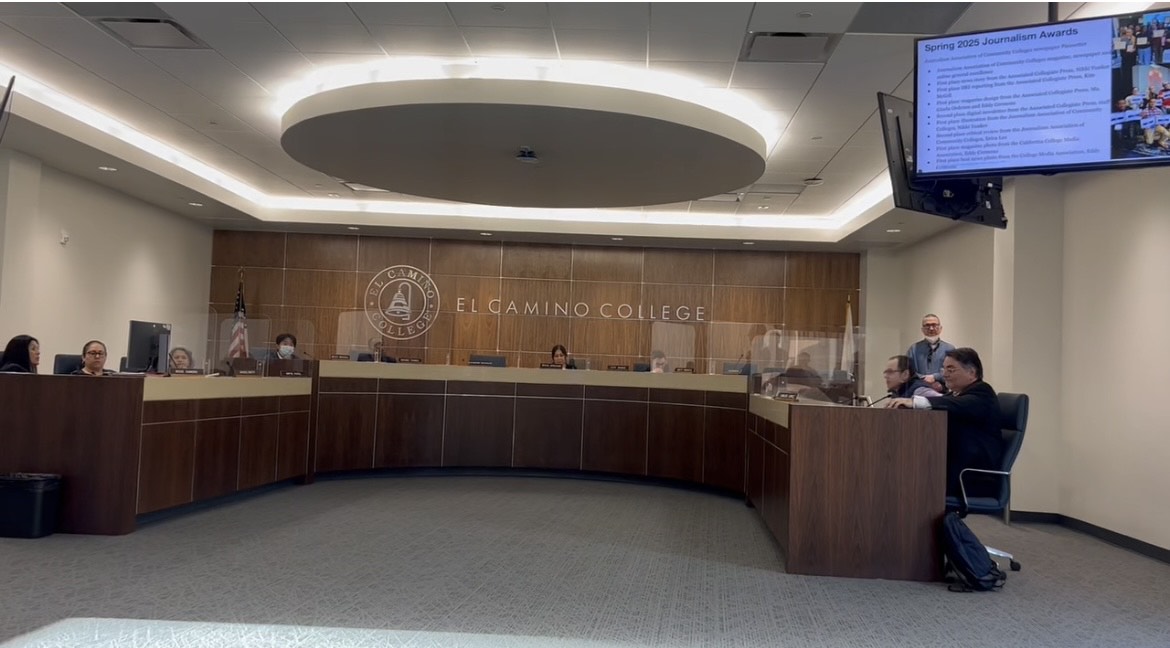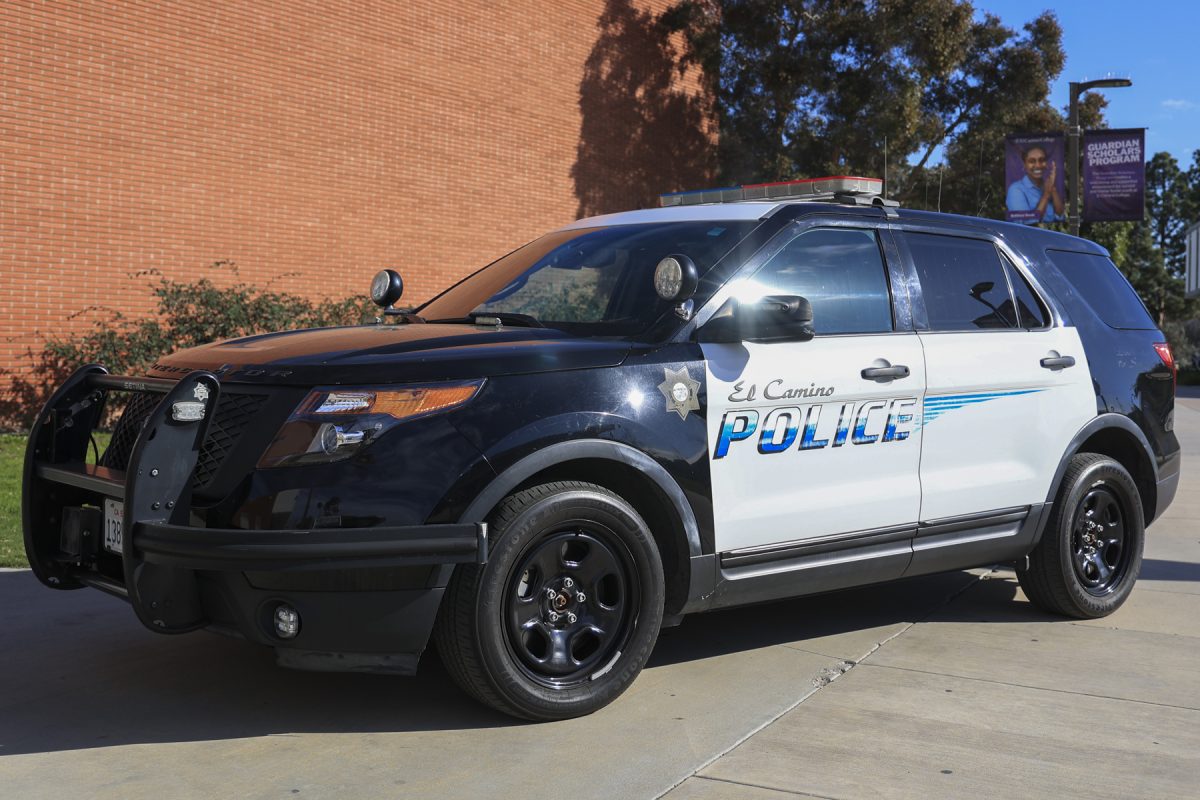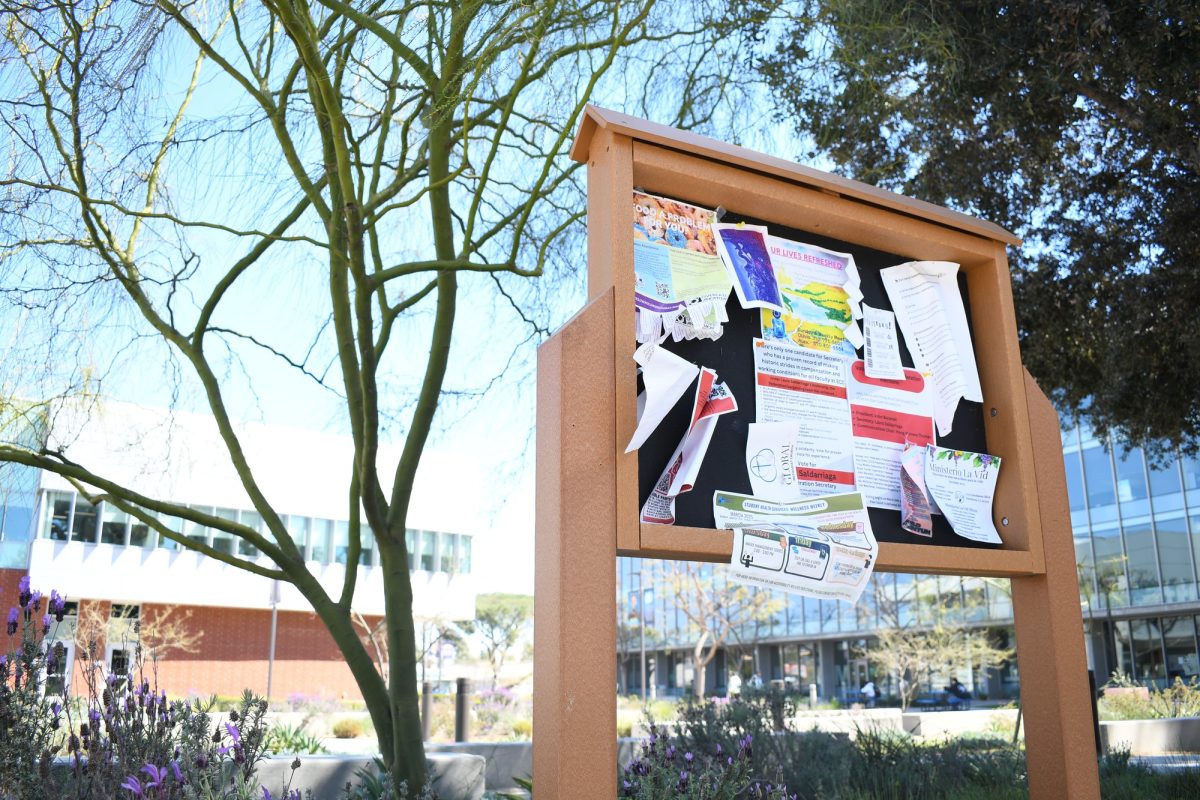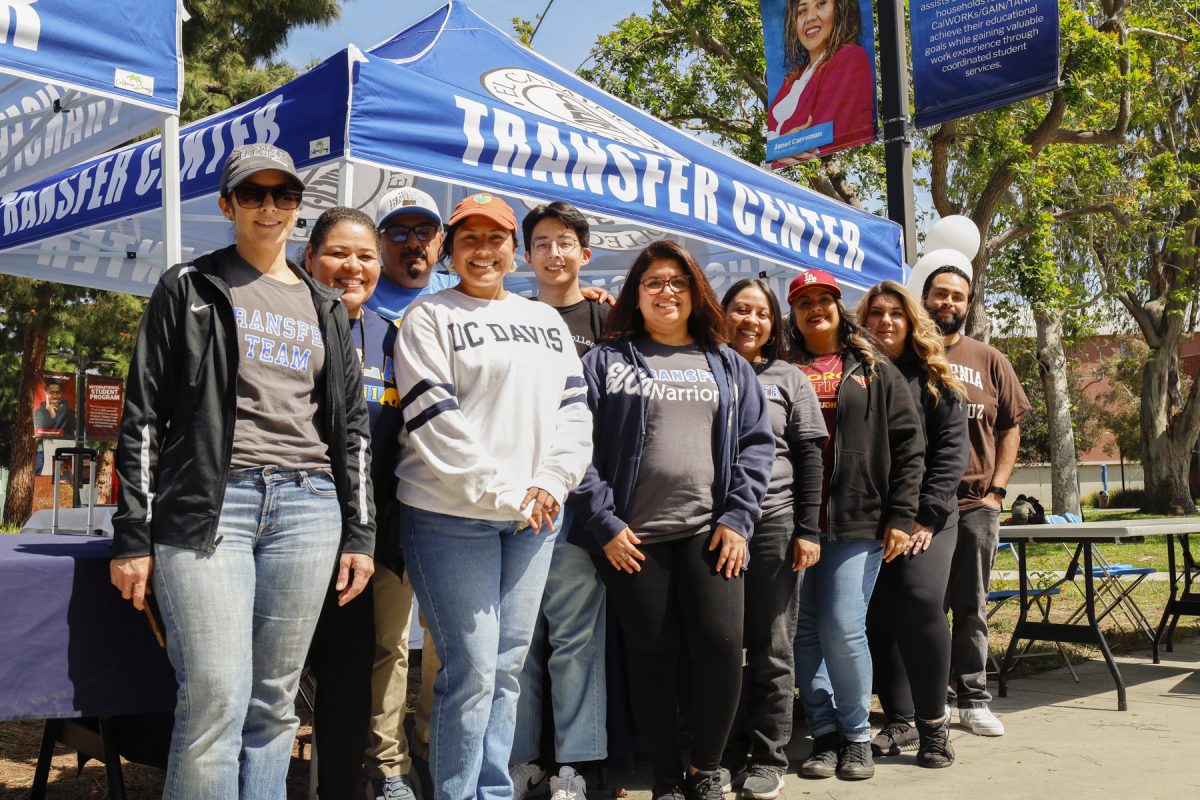In a flurry of colors, the projector arises from the middle of the Planetarium.
Accompanying the reveal, the thunderous musical theme of “Also Sprach Zarathrustra” by Richard Strauss sets a tone of awe and adventure.
Astronomy news, constellation projections and planet-gazing were some of the marvels hosted by the El Camino College astronomy department at its planetarium show Friday, March 28.
“The planetarium shows are meant for anyone who has any curiosity about the sky and our universe and our place in it,” physical science professor Susan Stolovy said.
Stolovy announced upcoming astronomical events and physical science professor Shimonee Kadakia took the audience on a tour of the stars as projected on the Planetarium’s domed ceiling.
“[The shows] are just trying to engage the public with looking up at the sky and thinking about what the world around them is like,” Stolovy said.
Kadakia detailed the names, stories and locations of each constellation and their stars, which would all be visible in the local night sky above the Planetarium if not for clouds and city lights.
“There’s no light pollution in the planetarium, so you get to witness basically the entire night sky without having to like handle all this light pollution,” astrophysics major Kai Merager, 20, said. “It’s a very fun event, I’ve been to like every single one of them. It’s just a great experience.”
Attendees from ECC and beyond converged on campus to participate in the event, which was the astronomy department’s first show of the spring 2025 semester.
As space inside the venue is limited, show dates are announced through faculty and staff emails and are updated on the college’s website the week of the showing.
Kadakia said half of the audience includes those who are curious about astronomy, while the other half is more familiar with the subject.
“When they come, all of them [the audience] get some astronomy knowledge that they’ve never had before, and you can see if they’re young, you can kind of see that spark happen,” Kadakia said. “We introduce them to science in a fun way.”
About an hour later, the show took to the roof of the Industry Technology Education Center for participants to gaze through telescopes at Jupiter and its moons.
“So many people here have never seen that, ever, they’ve just seen pictures of [Jupiter],” Stolovy said. “I mean those photons came from the sun, went through space, bounced off of Jupiter and its moons and came back to us through the telescopes and into our eyes. That whole thing happened and they witnessed it.”



![Physics and astronomy professor Susan Stolovy presents astronomical news and updates to attendees at the first planetarium show of the semester at El Camino College on Friday, March 28. Prior to becoming a professor at ECC, Stolovy completed her doctorate in physics and worked as an astrophysicist for NASA and the California Institute of Technology on spacecraft missions. "[I'm] still very tuned into what's going on in the world of research as well, and I hope to bring a little bit of my experience into the classroom," Stolovy said. (Nikki Yunker | The Union)](https://eccunion.com/wp-content/uploads/2025/03/planetarium-Made-with-Clipchamp-3-frame-at-0m28s-1200x675.jpg)


